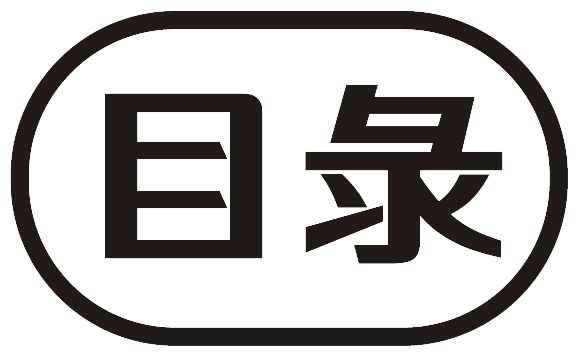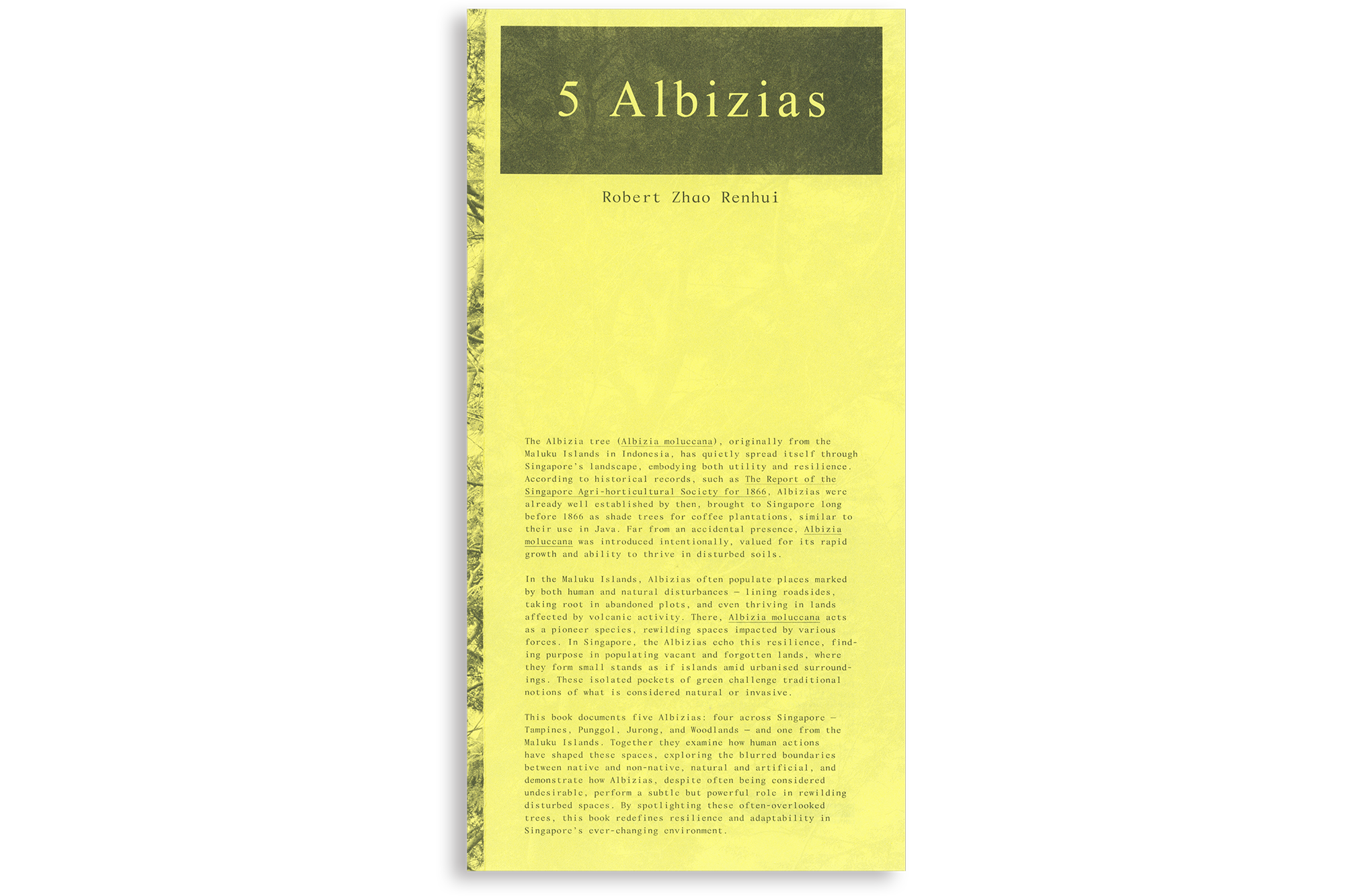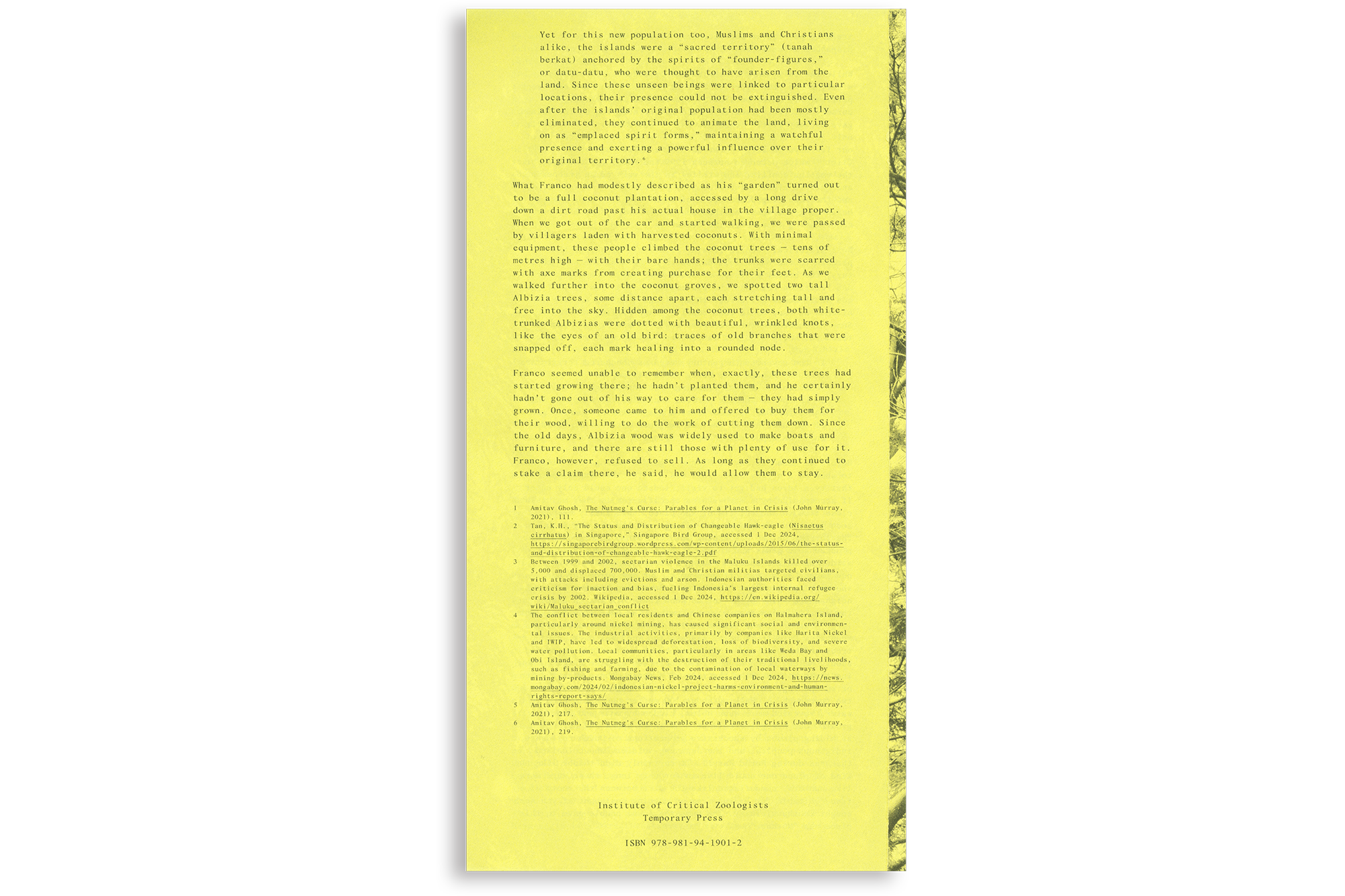Temporary Press
5 Albizias
- Regular price
- NT$ 800.00
- Sale price
- NT$ 800.00
- Regular price
-
NT$ 0.00
分享
5 Albizias
by Robert Zhao Renhui
Co-published by Institute of Critical Zoologists and Temporary Press
Desgined by gideon and jamie
Risograph printed in black
345 x 178 x 4 mm
First edition of 500, 2025
────────────────
五棵合歡樹
趙仁輝
合歡樹(Albizia moluccana)原生於印尼的摩鹿加群島(Maluku Islands),悄悄地擴散至新加坡的地景之中,展現其實用性與強韌生命力。在摩鹿加群島,合歡樹常見於受人為或自然干擾影響的地區——沿著道路生長、在廢棄地扎根,甚至能在火山活動過後的土地上茁壯成長。它作為「先驅樹種」具有復育效果,能使受創的土地重新野化;相似的修復力量也在新加坡展現,它們往往出現在空置或被遺忘的土地上,聚集成小片林地,宛如都市化環境中的一座座綠島。這些與世隔絕的綠地挑戰了我們對「自然」與「外來」的既定想像。
本書紀錄了五棵合歡樹:四棵分別位於新加坡的淡濱尼、榜鵝、裕廊和兀蘭(亦為此次展覽的四個場域),以及一棵來自摩鹿加群島的樹。此作探討原生與外來、自然與人工之間模糊不清的界線,同時聚焦於這些經常被忽視的樹木,展現它們在新加坡不斷變動的環境中所體現的韌性與適應力。黃色的紙張象徵落葉與溫暖陽光,同時在全書中交錯印刷不同樹木的照片,採用極淡的色調,如同走在樹冠之下時,陽光穿過枝葉投射出的光影,不斷變化、流動於書頁之間。這些影像的重疊干擾,模糊了書中所記錄之原生與外來樹種的界線。
The Albizia tree (Albizia moluccana), native to the Maluku Islands in Indonesia, has quietly spread itself through Singapore’s landscape, embodying both utility and resilience. In the Maluku Islands, Albizias often populate areas shaped by both human and natural disturbances—lining roadsides, taking root in abandoned plots, and even flourishing in lands affected by volcanic activity. There, Albizia moluccana acts as a pioneer species having a rejuvenating effect and rewilding spaces impacted by various forces. In Singapore, Albizias perform a similar recovery, finding purpose in populating vacant and forgotten lands, where they form small stands as if islands amid urbanised surroundings. These isolated green pockets challenge traditional perceptions of what is considered natural or invasive.
This book documents five Albizias: four from across Singapore—Tampines, Punggol, Jurong and Woodlands, reflecting the venues of this exhibition—and one from the Maluku Islands. Together they examine blurred boundaries between what is considered native and non-native, natural and artificial, while highlighting these often overlooked trees for their resilience and adaptability in Singapore’s ever changing environment.
The yellow paper relates to both the fallen leaves and warm sunlight and printed alternating photographs of different trees in a very faint tint across the entire book, like the filtered shade that shifts and changes throughout the day (across pages) when walking under a canopy. The resulting interference caused by overlapping images blurs the lines between the various documented native/non-native trees.


